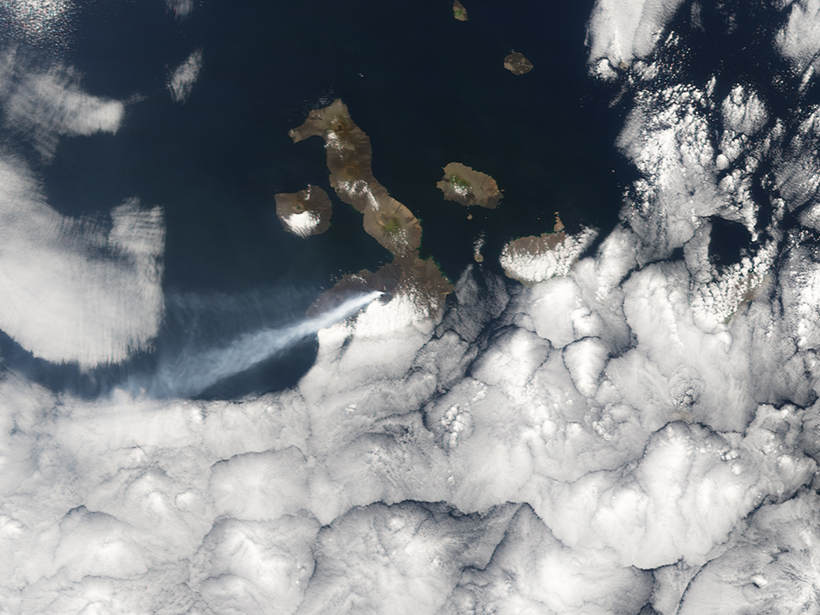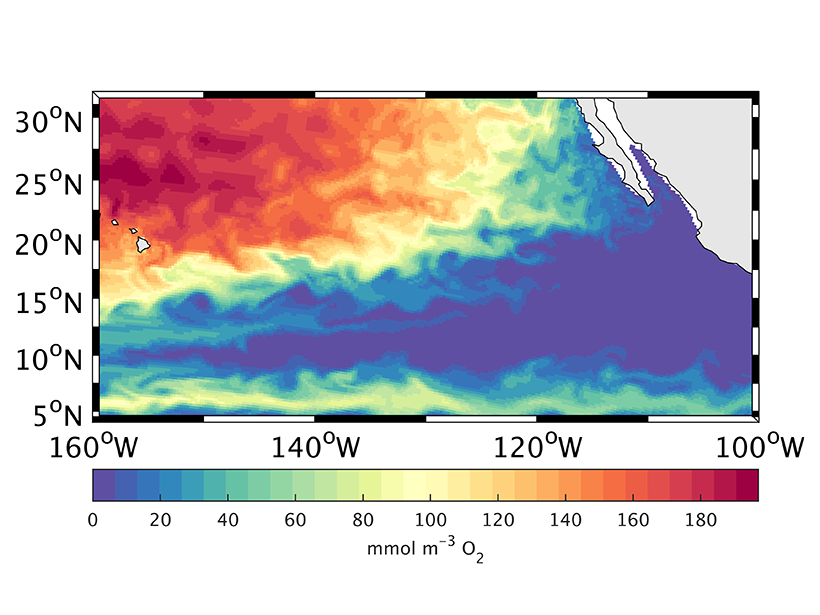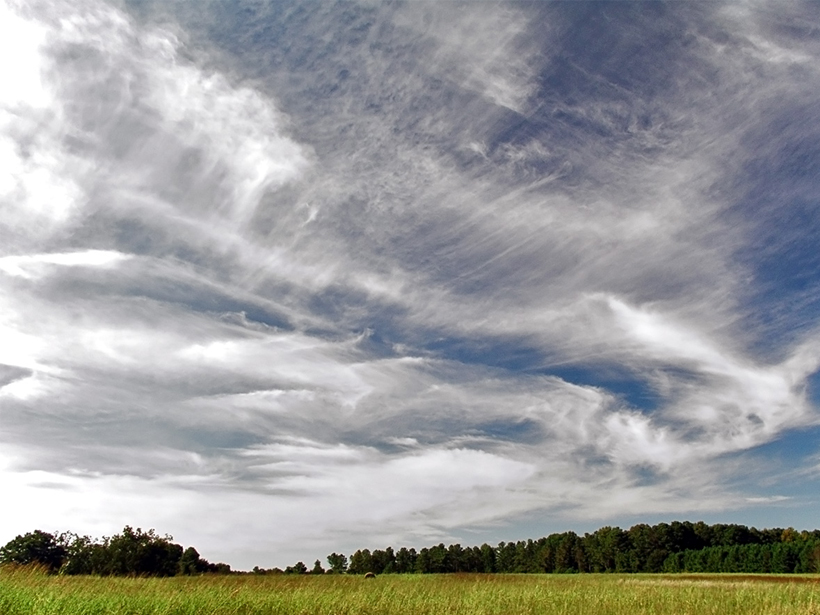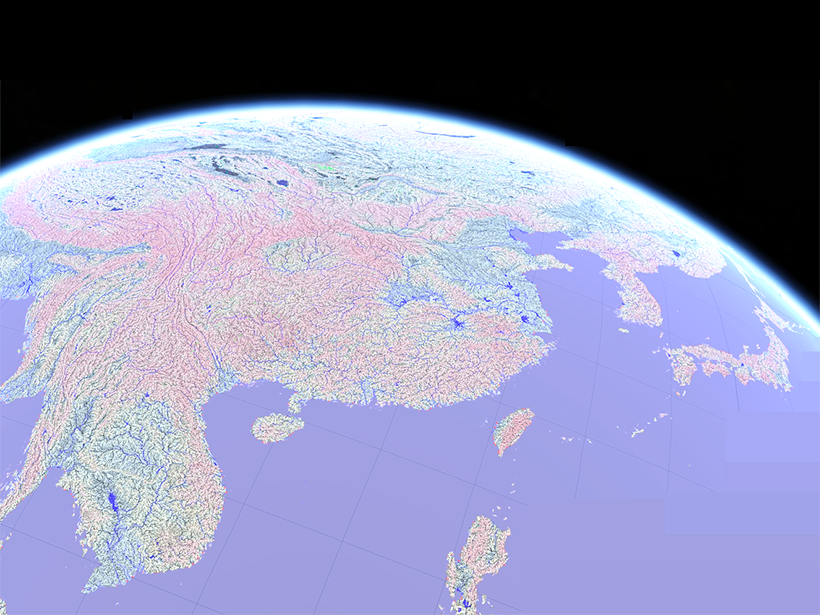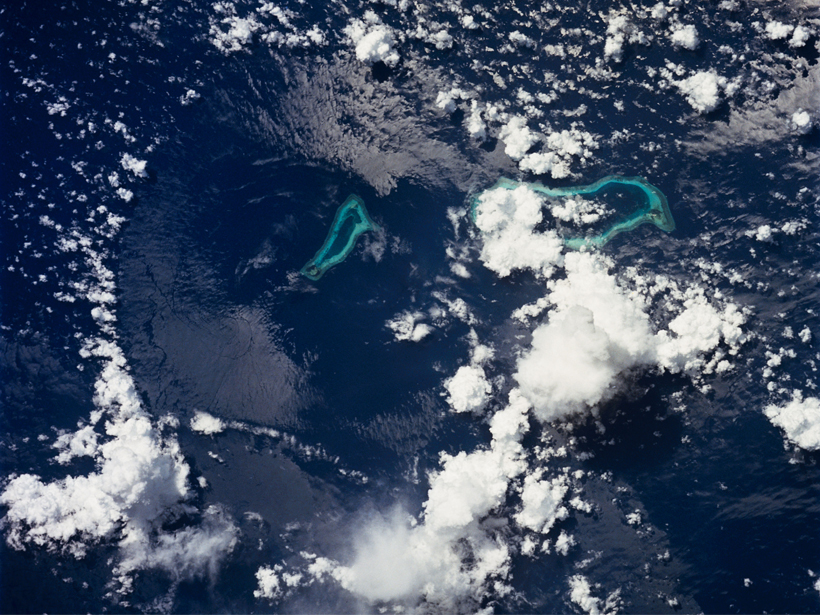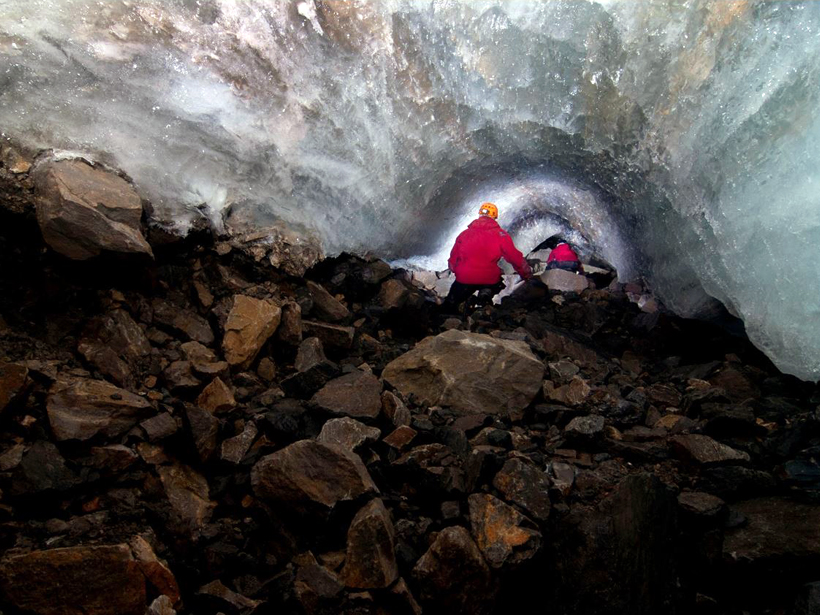A machine learning algorithm automatically detects telltale signs of volcanic unrest.
E. Underwood
Standardizing the Surge of Paleoclimate Data
Researchers unveil a community-wide effort to standardize terminology and reporting requirements across paleoclimate data.
Soil Moisture Drives Great Plains Cloud Formation
A new study shows that models that reproduce moisture on land are better at accurately recreating cumulus cloud behavior.
How the Ocean’s “Shadow Zone” Breathes
A new study uses Argo floats and an ocean circulation model to track the sources supplying pulses of oxygen to the deep North Pacific.
A Better Way to Measure Cloud Composition
An enhanced satellite remote sensing suite accurately measures ice particles, temperature, and water vapor.
A More Accurate Global River Map
A new map of global river systems is based on crowdsourcing and the latest topography data sets.
The Tropical Atmosphere’s Balancing Act
A new study finds that the tropical atmosphere maintains radiative-convective equilibrium as a whole, but not at smaller scales.
Missing Lakes Under Antarctic Ice Sheets
New radio sounding study finds little evidence of lakes under Antarctica’s Recovery Glacier.
Pacific Carbon Uptake Accelerating Faster Than Expected
A new study suggests that shifting ocean currents drive faster carbon dioxide uptake.
Mapping Subglacial Meltwater Channels
Researchers find that past studies underestimate the friction meltwater channels exert on glaciers by orders of magnitude.

